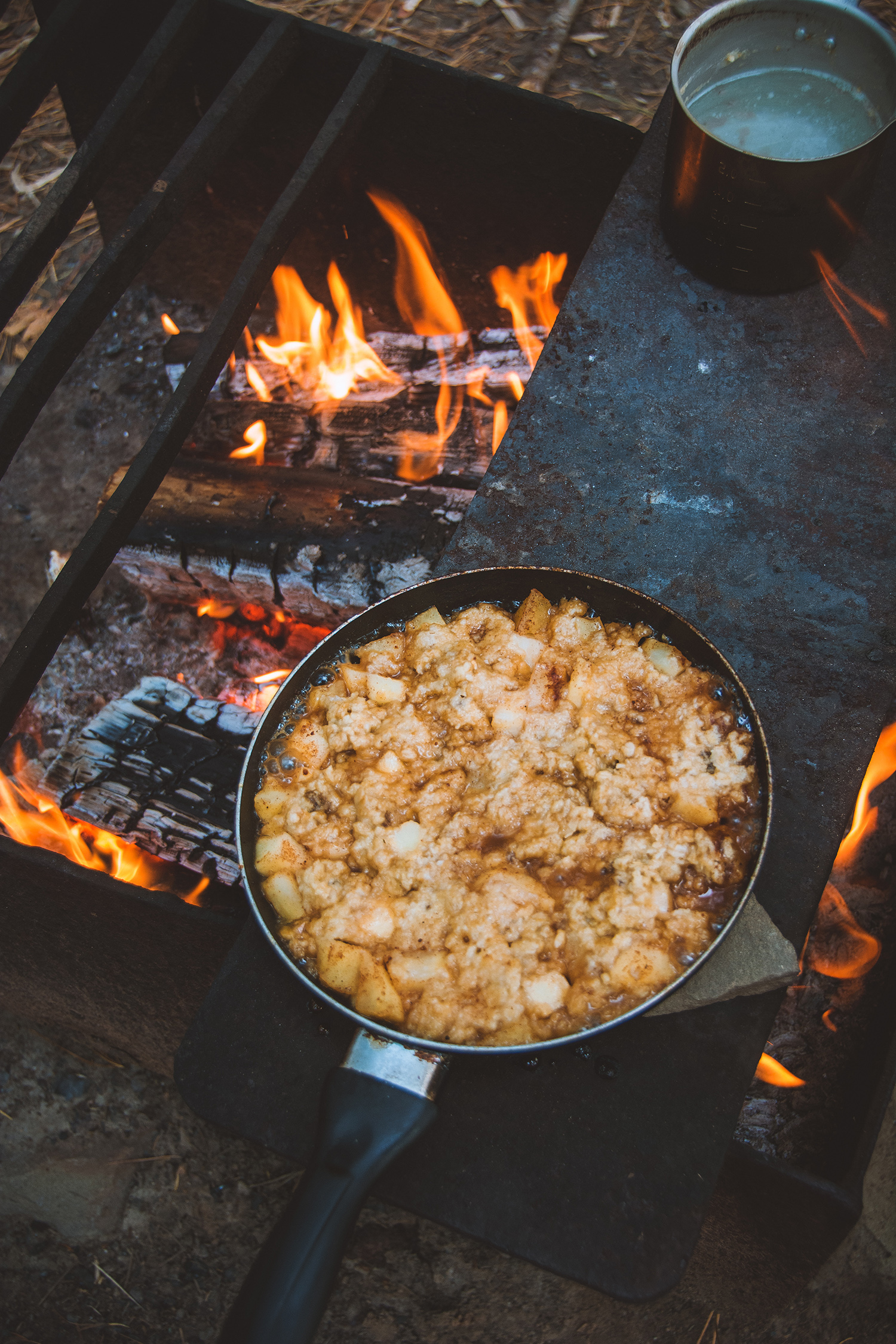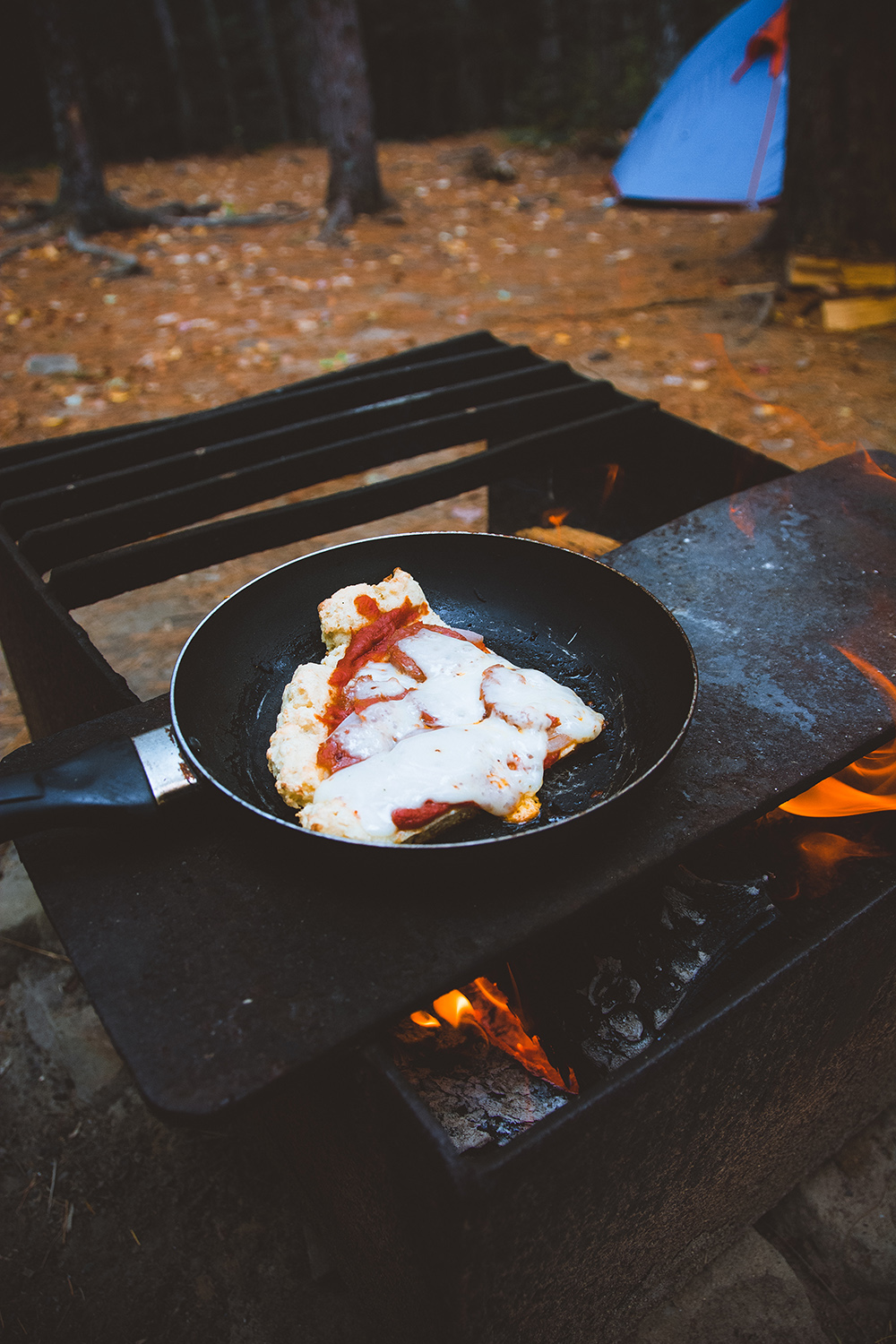Did you know there’s an easy way to measure a campfire’s cooking temperature? It’s called the “hand test” and it can help you nail the perfect cook every time.



Measuring Cooking Temperature
To perform the hand test, start by holding your hand, palm-down, about six inches above where you will be cooking. Be careful, if the heat becomes too intense, pull your hand away immediately. How long you can comfortably hold your hand over the heat gives you an estimate of the cooking temperature:
Less than 1 second: + 600 F (high)
1 – 2 seconds: 400 – 500 F (medium-high)
3 – 4 seconds: 350 – 375 F (medium)
5 – 7 seconds: 325 – 350 F (low)
It’s that simple. Remember, these temperatures are rough guidelines and may vary slightly, but this test is a game changer when it comes to upping your campfire cooking skills. Here’s some other tips that may also help:
Choose the Right Cookware
If you can carry the weight, opt for cast iron cookware, like Dutch ovens and skillets. They distribute heat evenly, withstand the direct heat of a campfire, and are perfect for cooking a range of dishes. I bring a cast iron skillet when I’m canoe or car camping. I’ve even been known to hike one into the backcountry, but I don’t recommend that.
Using Temperature Zones
Professional chefs who cook on open fires often create several temperature zones. They’ll have a spot for grilling vegetables, another for cooking protein, and an area to draw hot coals from to increase the temperature of the other zones. It takes practice to master this kind of temperature regulation, but once you get the hang of it you’ll be able to cook anything on an open fire.
Carryover Cooking
Remember food will retain heat and continue cooking even after it is removed from the fire. This is known as “carryover cooking.” Keep this in mind so you don’t overcook or dry out your food.
Embrace One-Pot Meals
From hearty stew to flavourful chilli, one-pot meals require minimal effort and they’re super delicious and filling. Any meal where you can layer your ingredients and let them simmer slowly over a campfire is bound to be a hit.
Pack Foil and Skewers
Aluminum foil is a versatile tool for campfire cooking. Wrap vegetables, fish, or chicken in foil packets with herbs and seasoning for flavourful, mess-free meals.
I also love skewers for grilling kebabs. If you are using wooden ones, soak them in cold water for 30 minutes before cooking over low heat. This will prevent them from burning.
Happy Cooking!
I hope these tips help you prepare some great campfire meals! If you have any campfire cooking tips – share them below.
Other Posts You May Enjoy
Death by S’mores: Trying 10 Different Smore Recipes
Backcountry Meal Plan: 3 Days / 2 Nights